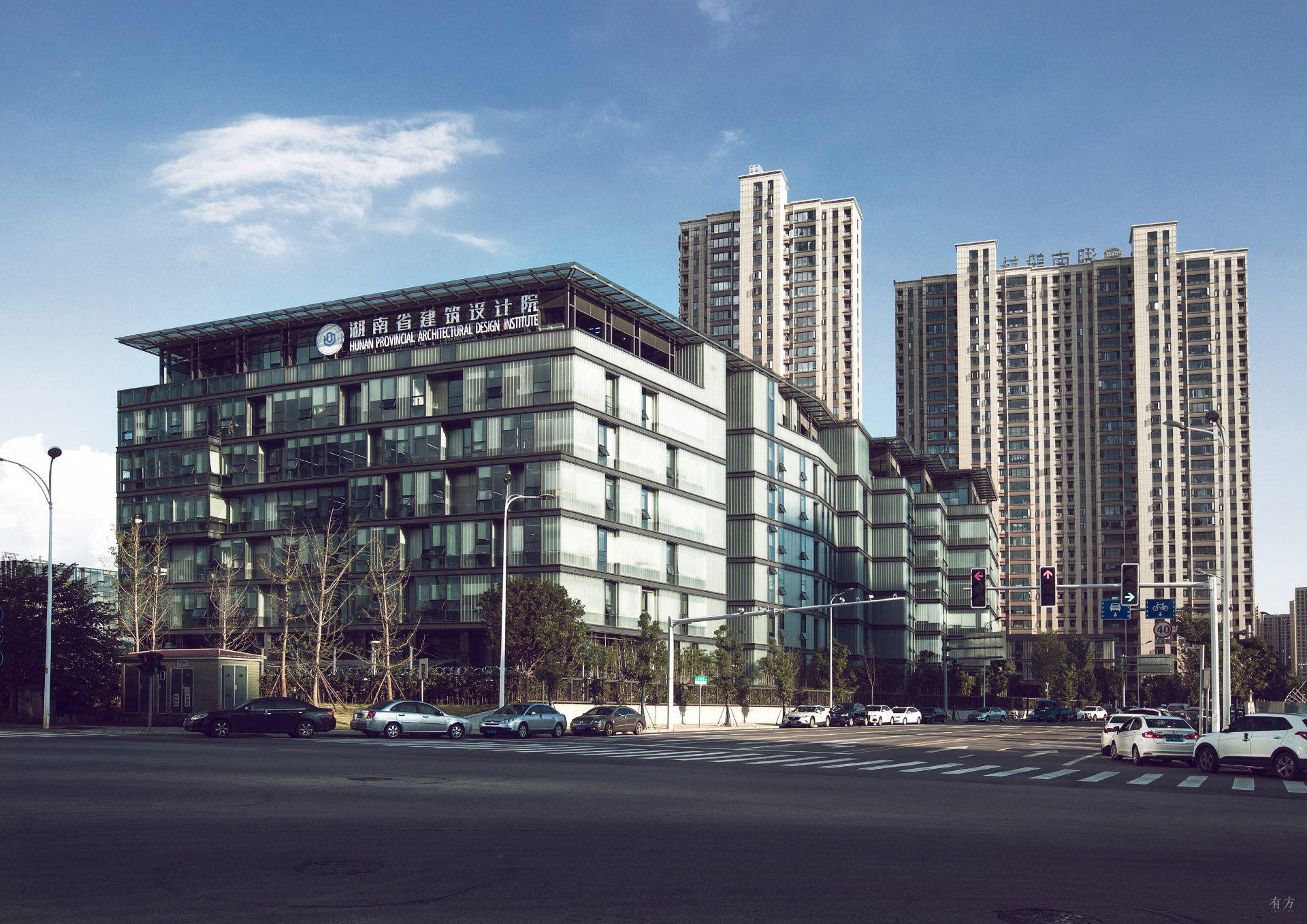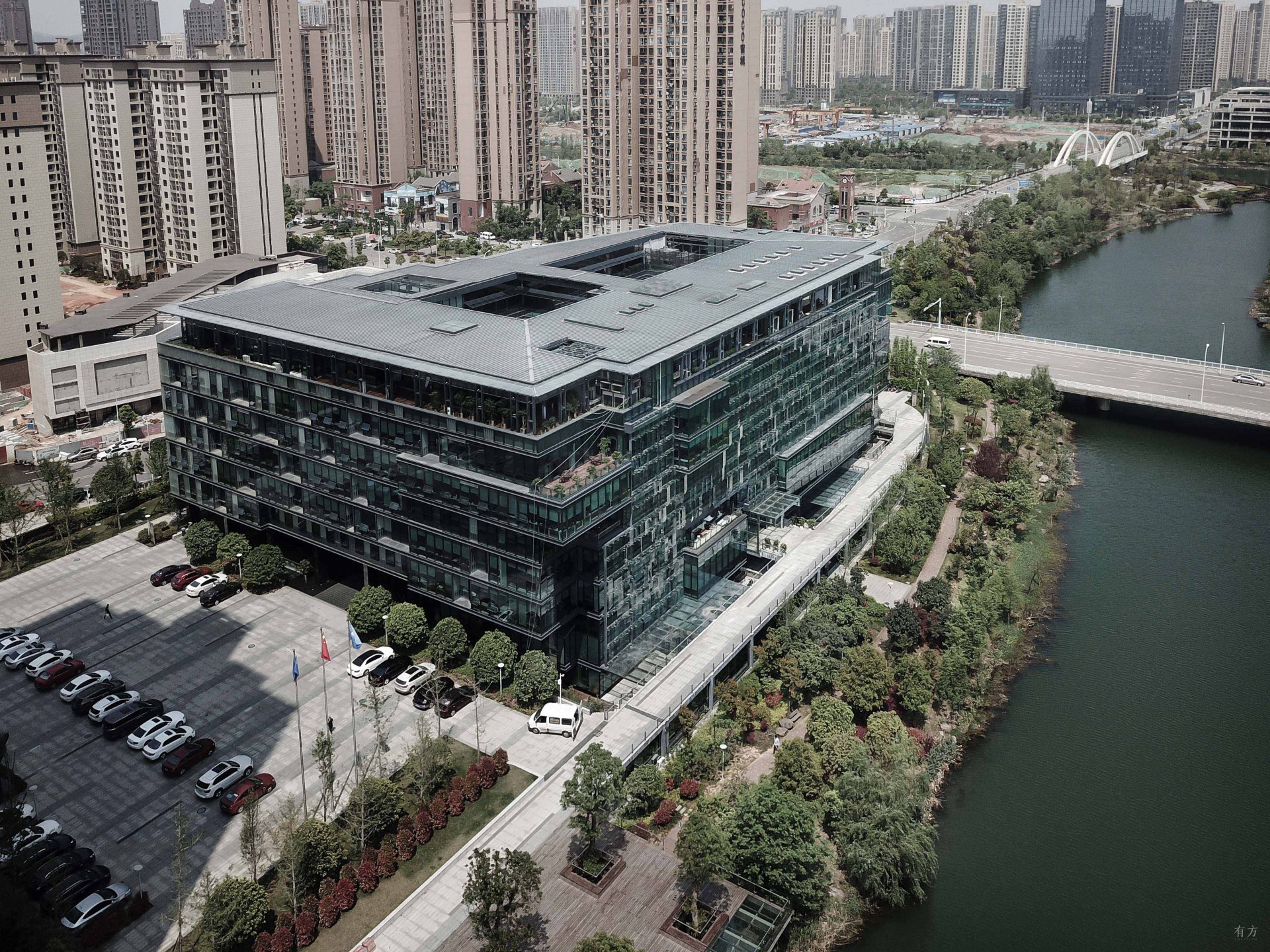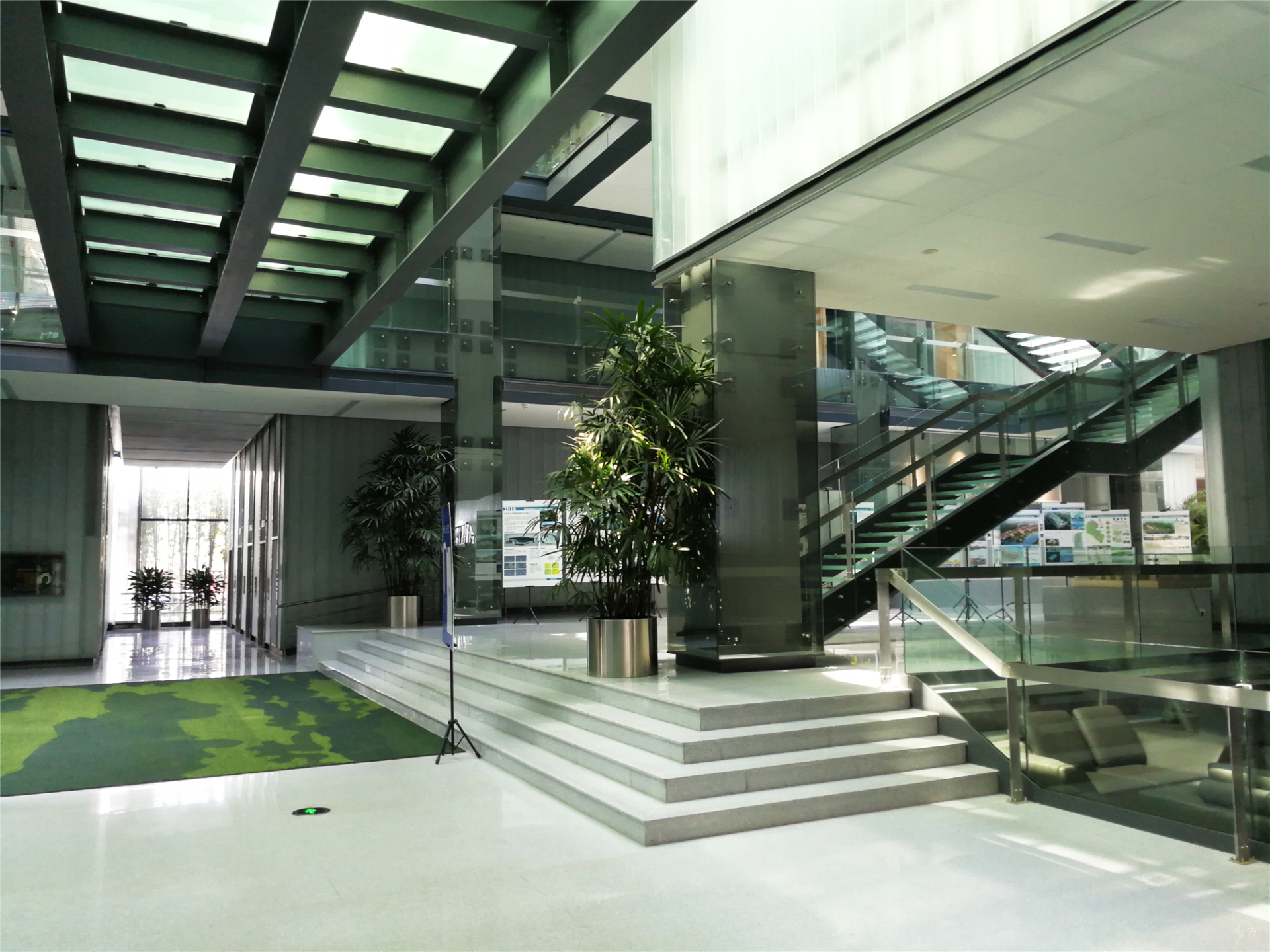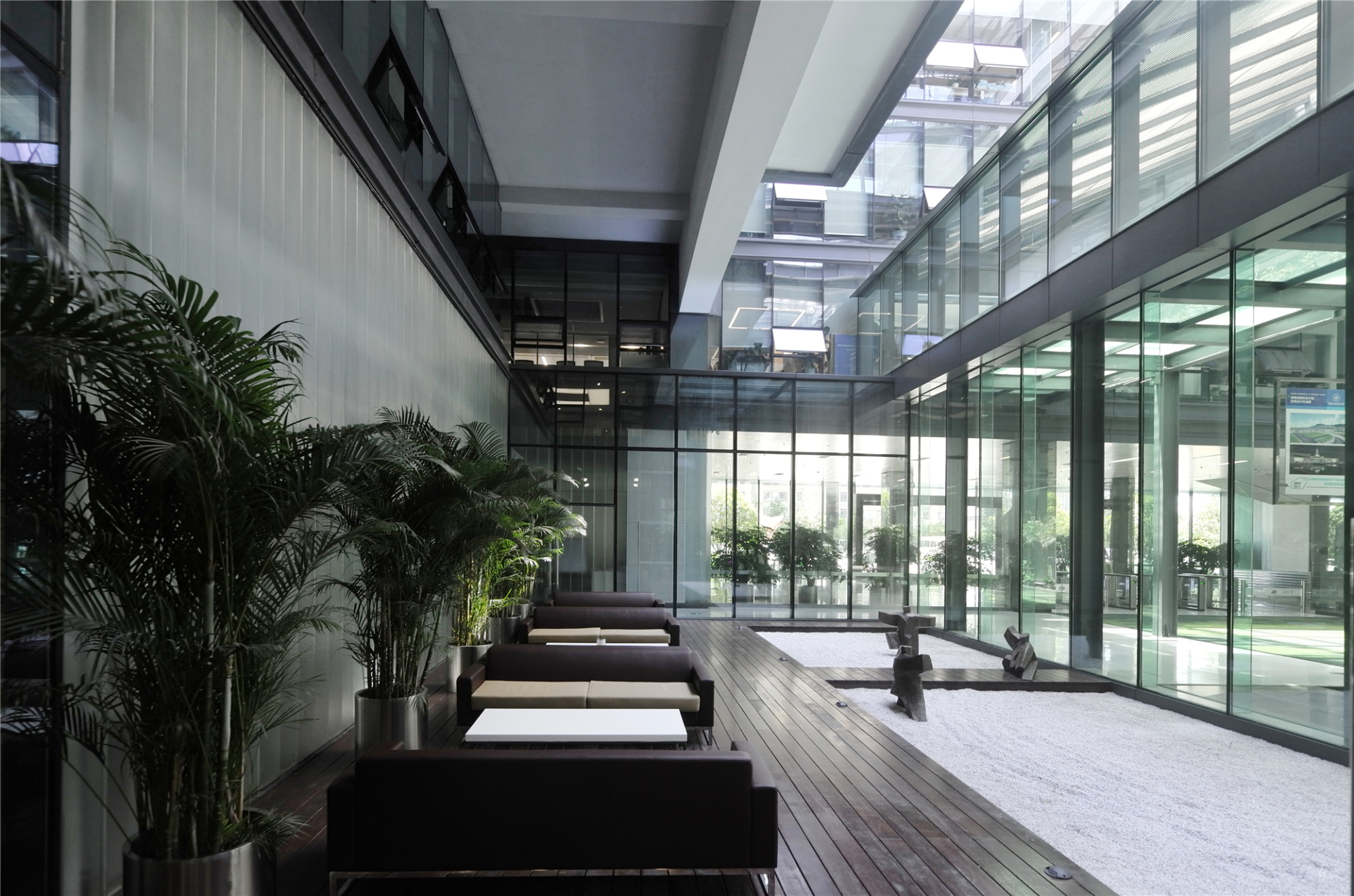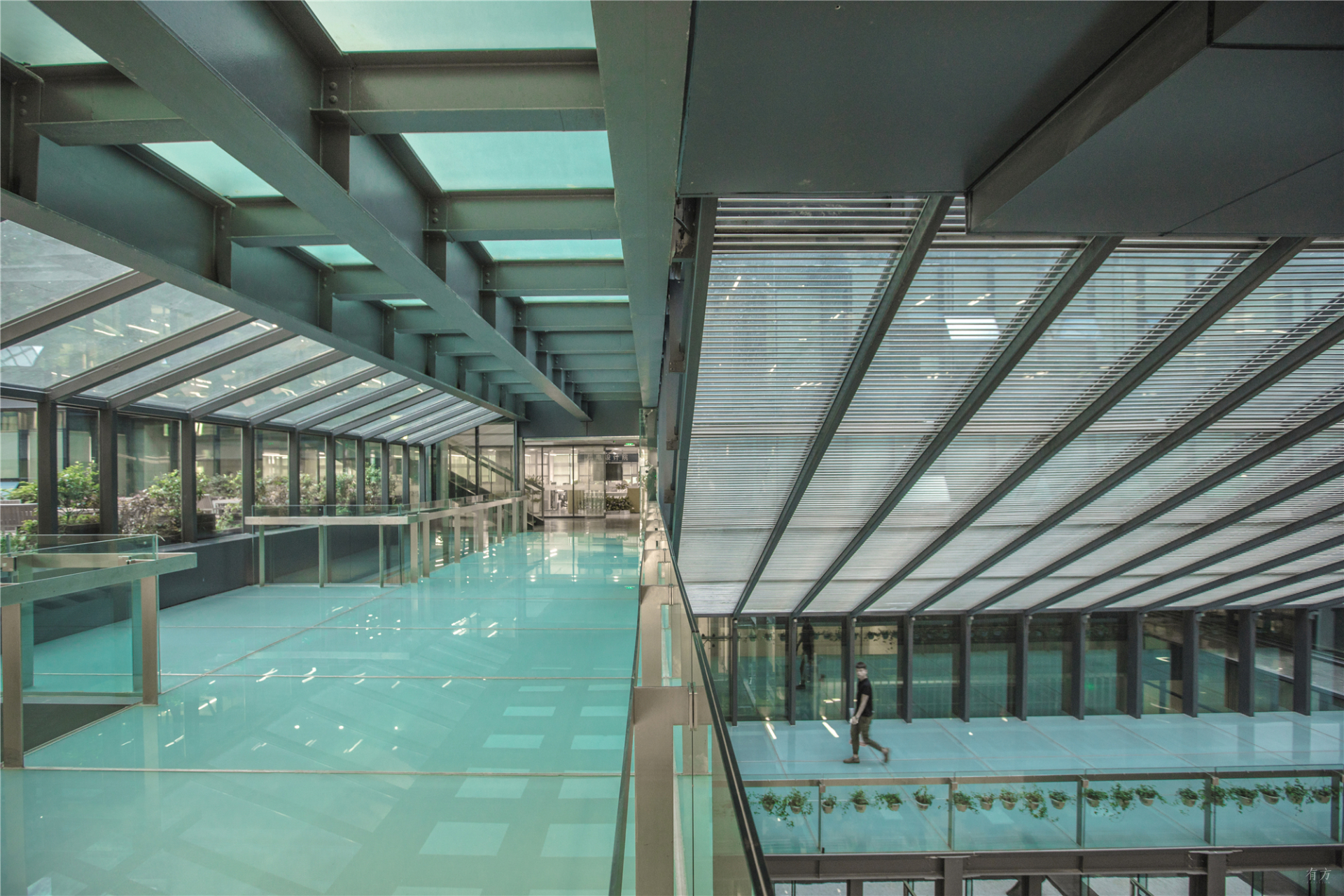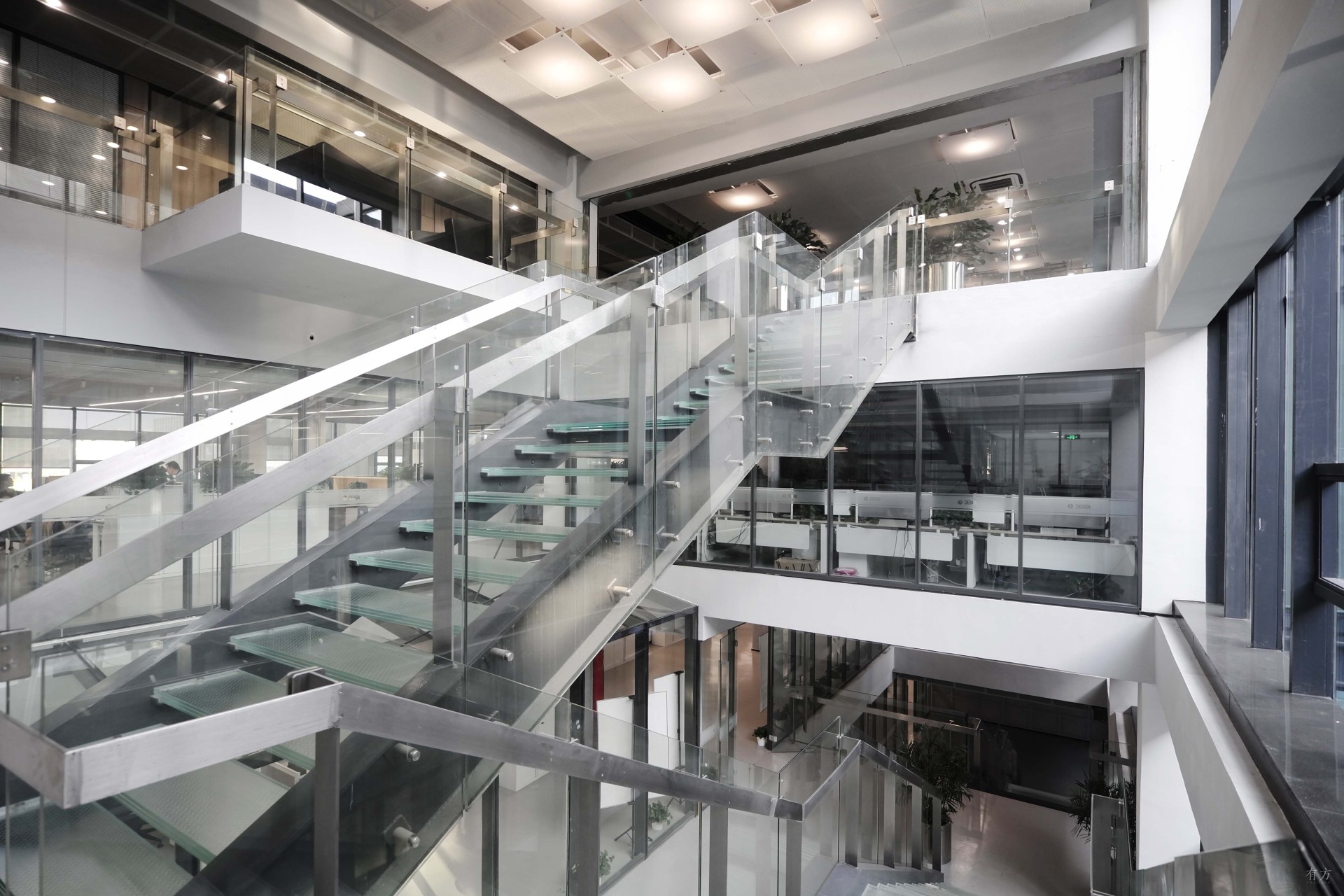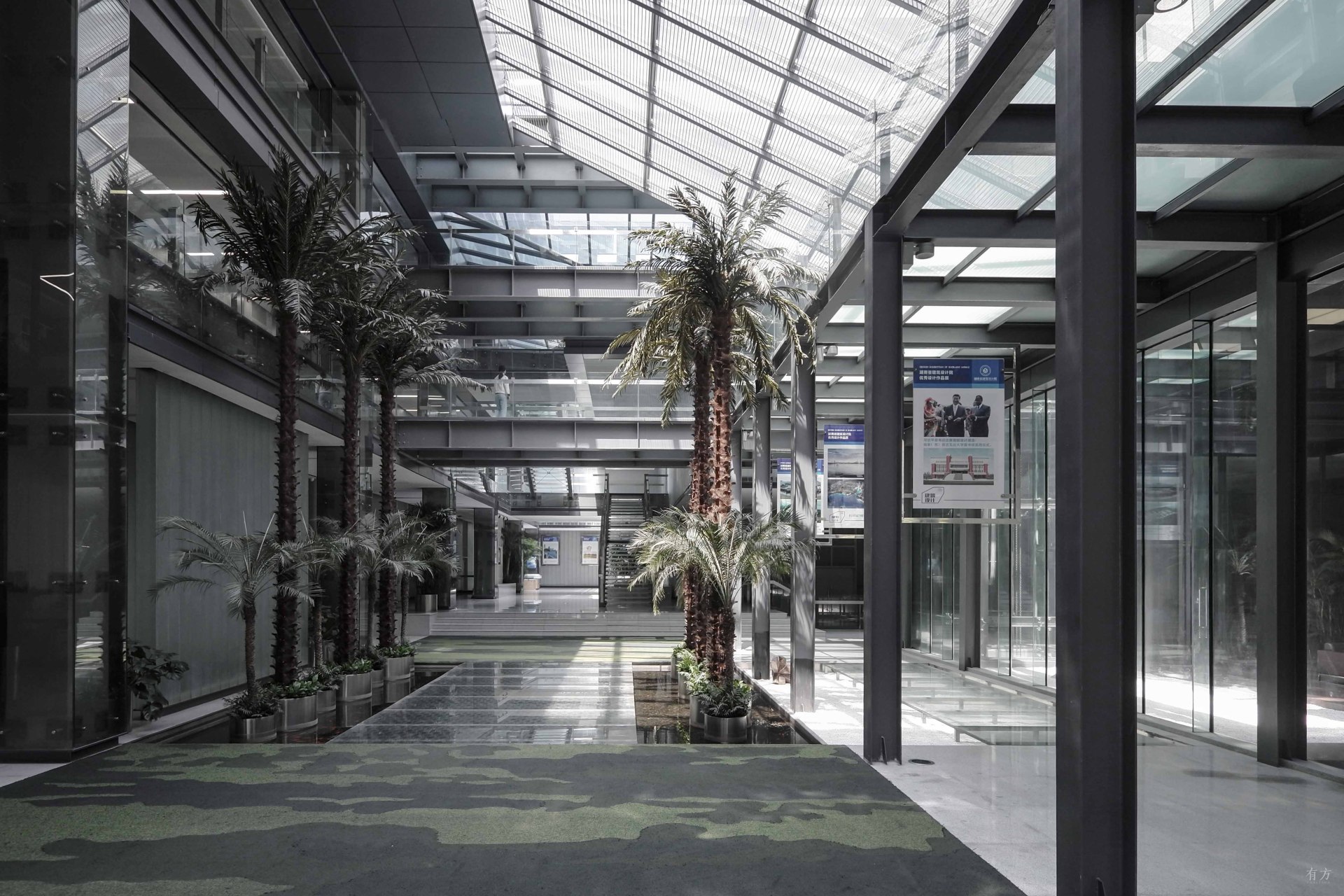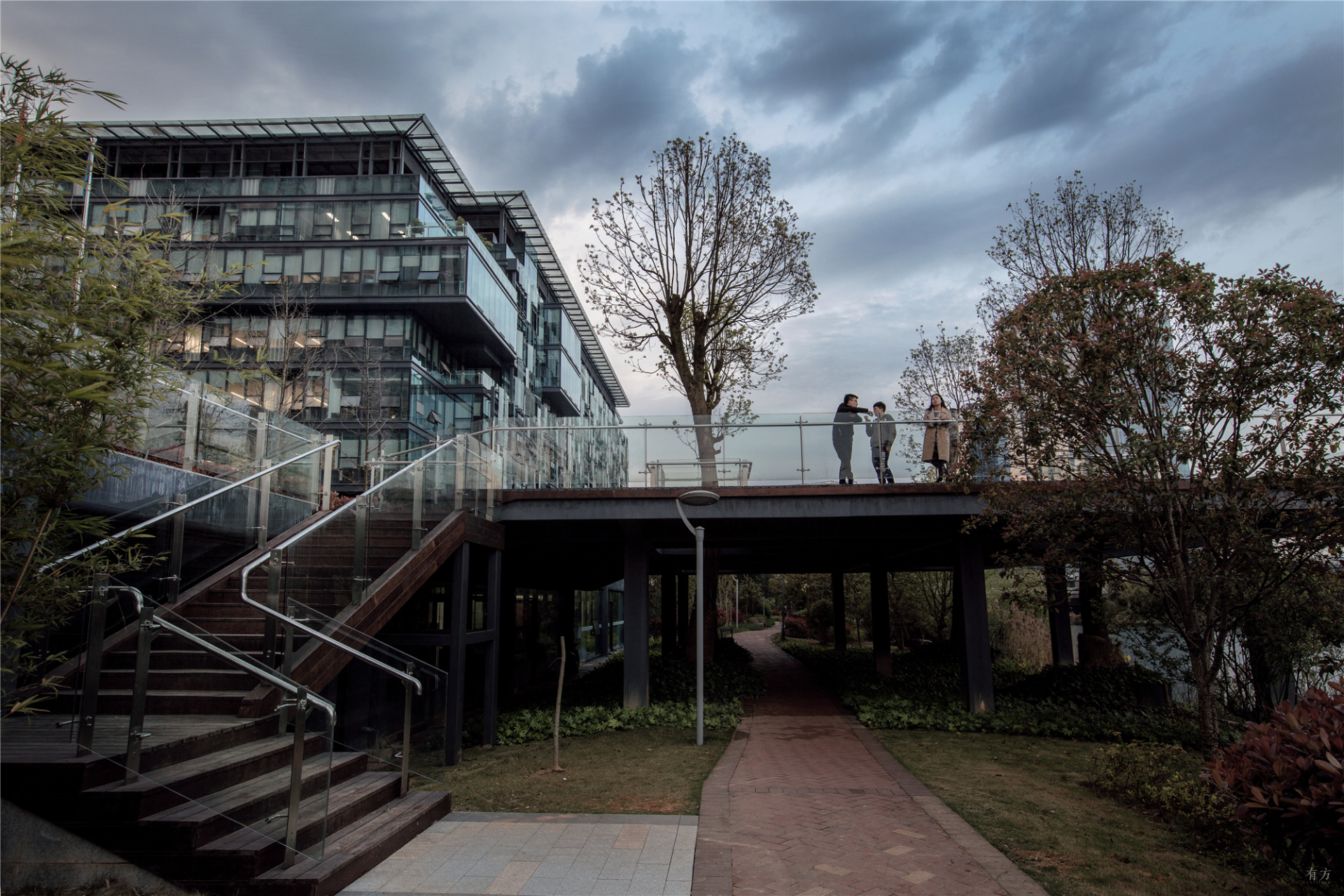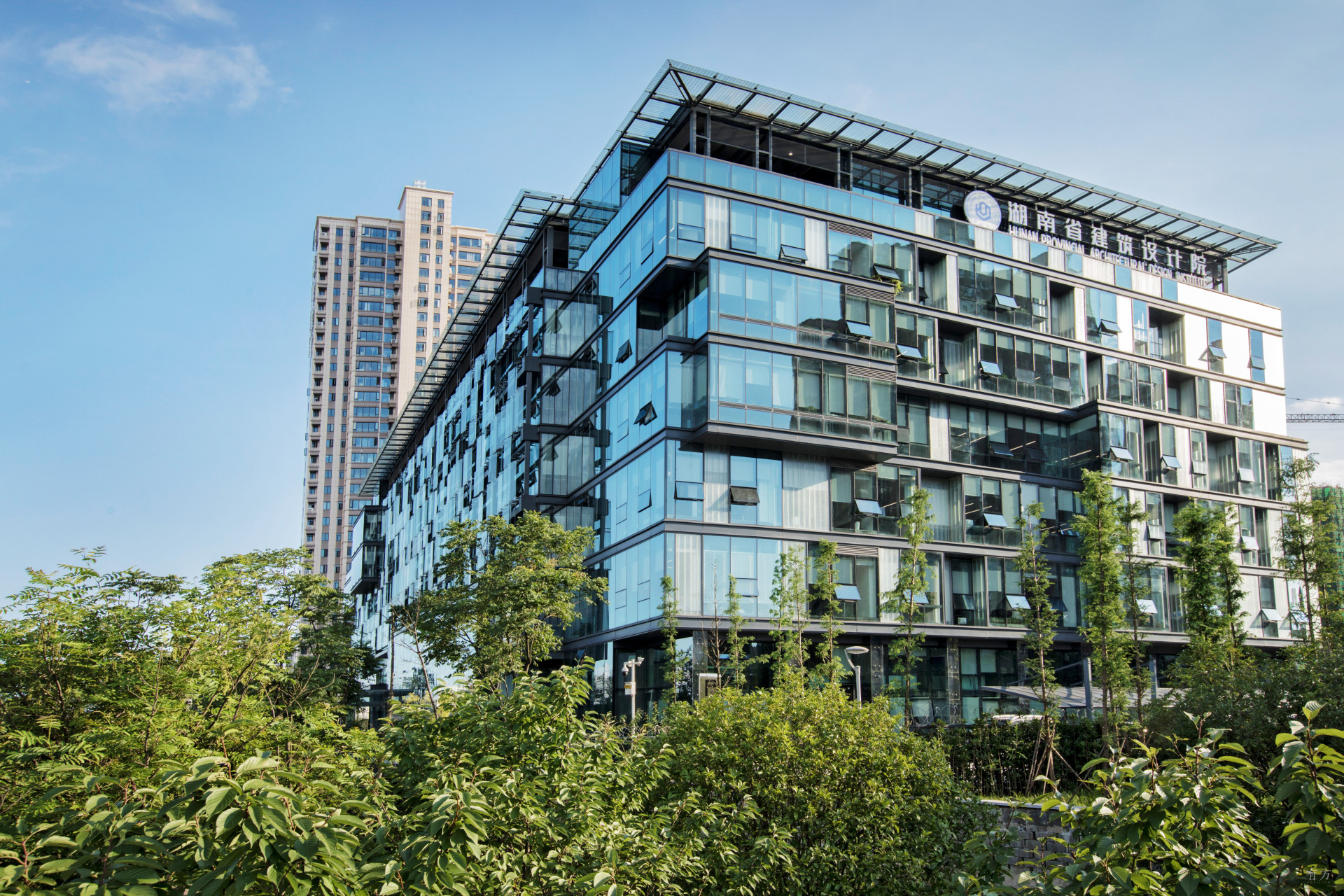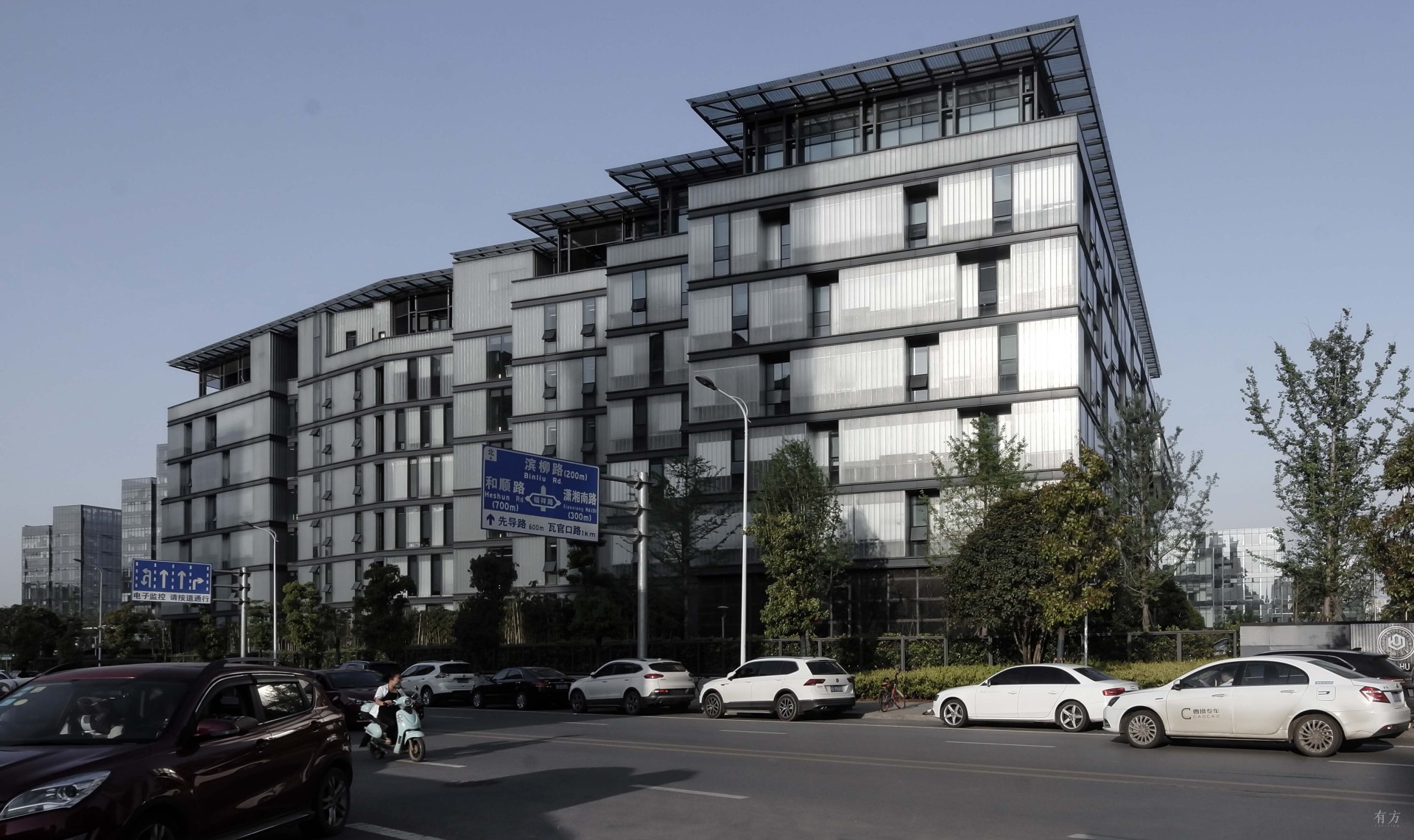The office building showcases remarkable ingenuity in the application of U profile glass. It adopts a combination of double U profile glass, LOW-E glass, and ultra-white glass, integrating them into the core design of the building facade. This approach not only aligns with the building’s “street and alley” spatial concept but also meets multiple needs such as lighting, aesthetics, and environmental adaptability. Below is a detailed analysis:
Facade Form and Spatial Atmosphere Creation
The core design concept of the office building is to create a three-dimensional “street and alley” space, and U profile glass is one of the key materials to realize this concept. Its combination with LOW-E glass and ultra-white glass forms an irregular concave-convex building facade, breaking the monotony of traditional office building facades. This special interface form allows sunlight to penetrate the interior at various angles and forms, creating a soft and layered light environment. It avoids glare interference in the office while extending the transparency of the “street and alley” space inside the building to the outside. As a result, the building boundary is no longer rigid; instead, it integrates with the surrounding urban streets and the natural environment of Yanghu Wetland Park in an open manner, creating a vibrant and interesting coexistence between the building and the urban environment.
Environmental Regulation Adapting to the Site
The office building’s location has specific environmental adaptation requirements, and U profile glass plays a role in environmental coordination and energy consumption control. The west side of the building adopts an inner balcony design, with U profile glass specially arranged on the outer side. On one hand, it acts as a sunshade, reducing indoor heating caused by direct sunlight on the west side in summer and lowering building energy consumption. On the other hand, the relatively low-key appearance texture of U profile glass enables the building to better integrate into the surrounding environment visually, avoiding a sense of abruptness with the natural landscape and achieving harmonious coexistence between the building and the site environment.
Performance Optimization and Technological Adaptation Breakthroughs
The project uses double U profile glass to construct the curtain wall, which initially posed challenges to energy-saving design. However, the problem was successfully overcome through subsequent electrical technology optimization, giving full play to the performance advantages of double U profile glass. In terms of material properties, the heat transfer coefficient of double U profile glass is much lower than that of ordinary insulating glass, offering superior thermal insulation performance and reducing energy loss caused by temperature exchange between indoor and outdoor spaces. Meanwhile, it exhibits excellent sound insulation performance, which can isolate external urban noise and provide a quiet office environment inside the building. In addition, compared with ordinary glass curtain walls, U profile glass has higher load-bearing capacity. When used as the main load-bearing component of the curtain wall, it can reduce the use of a large number of steel or aluminum profiles, not only lowering material costs but also improving construction efficiency through its simple and fast installation method, which adapts to the overall construction needs of the building.
Contributing to the Achievement of Green Building Standards
Jiangyayuan Office Building is a project certified with the Three-Star Green Building Certification, and the application of U profile glass provides strong support for its green attributes. U profile glass has high light transmittance, which can still reach about 81% when installed in double rows. It can fully utilize natural light to meet indoor lighting needs, reducing energy consumption from artificial lighting during the day. Moreover, U profile glass can be reproduced using recycled broken glass, making it a green and environmentally friendly material that conforms to the project’s green construction concept. Combined with other passive designs such as the building’s sunken courtyard, light pipes, and vertical greening, as well as active technologies like solar water heating systems, it jointly helps the building achieve energy conservation and emission reduction goals and promotes it to meet the Three-Star Green Building Standard.
Post time: Nov-19-2025


